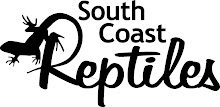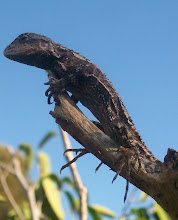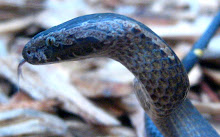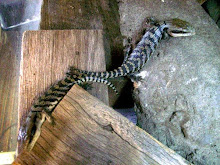
(Tilliqua scincoides ) 45cm-55cm
This is a very common lizard to the south coast found in many gardens eating snails and spiders and vegetables, a slow moving lizard and when threatened will raise its head and hiss with there blue tongue out.
The blue tongue has a triangular shaped head and wide body it has short legs and a stumpy tail and the obvious large blue tongue, the upper body has stripes running across ranging from black to yellow.















